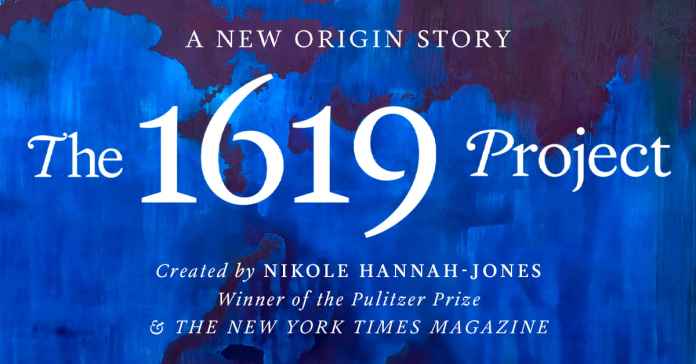A couple of years ago at Fiesta La Ballona, a representative from Culver City’s sister city in Canada came by our Club booth, and in our conversation he asked me why the USA has so many problems that Canada doesn’t have. What’s the difference? And I didn’t even have to think for a second before I answered “Slavery. We had slavery.” I didn’t know how right I was until I experienced The 1619 Project—A New Origin Story created by Nikole Hannah-Jones.
Hannah-Jones and the other contributors to the Project take us back to August, 1619, on that first day of slavery in America and hopscotch through history to trace the unbroken chain that got us where we are.
First, we need to get our terminology straight. What changes if we use the term “enslaved person” in place of “slave”? Suppose the phrase “forced-labor camp” replaces “plantation”? And what if we describe ten of our first twelve Presidents not as “planters” but as “enslavers”?
What came up for me was disappointment. I have to give up my illusions about Thomas Jefferson? The guy that Gore Vidal called “Dreamy Tom.” I picture him sitting in Monticello surrounded by books and dreaming this nation into existence by fetching up those “self-evident truths” that “all men are created equal” with “unalienable rights.” But, he was an enslaver. And I even have to give up my hero Patrick “Give-Me-Liberty-Or-Give-Me-Death” Henry. Disappointing.
I think it is that white disappointment that makes this “new origin story” so controversial. It has been called unpatriotic, but no one who read Hannah-Jones’s Chapter 1, “Democracy,” could possibly conclude that this truth-telling history comes from anything but authentic love of country.
Another sore point for some is the role of slavery in our nation’s founding. I don’t know why this is controversial. Clearly the southern colonies would not have signed on to the Constitution if it had not accommodated slavery. The 2nd Amendment was added to guarantee that the North would not be able to disarm the slave patrols—and fast forward to George Zimmerman of the Neighborhood Watch and Derek Chauvin of the Minneapolis PD.
In Chapter 11—“Inheritance,” Trymaine Lee gives an account of the racially motivated murder of a successful Black business owner, but he does not stop there. He walks the reader through the aftermath and shows how the harm trickled down the generations.
In Chapter 12—“Medicine,” Linda Villarosa shows us Dr. Susan Moore—a Black medical doctor who is allowed to die from inadequately treated COVID-19 in excruciating pain—and flash back to a 1787 medical treatise that claimed that Black people could bear pain more easily than white people.
When I picked up the book, I had hoped for a heartening account of hope and courage where Civil Rights in America grew from victory to victory. Uh, no. This is a truthful history. And the words “We shall overcome” are still appropriately sung in future tense. What saves it from being too painful to read is the intelligent analysis and the poetry. For example, the story of Emmett Till is told in a poem titled “1955.”
There is one segment of the book written by Terry McMillan that actually made me smile, though, because it reminded me that courage is contagious. (This segment is labelled “fiction.”)
I highly recommend this enthralling and richly footnoted book. It is available in hardcover, paperback, Kindle, and for listening on Audible.

